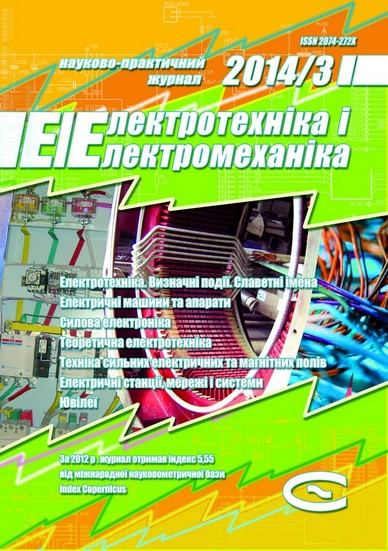CAST-FILM POLYMER COMPOSITION DOSING SYSTEM DRIVE CONTROL
DOI:
https://doi.org/10.20998/2074-272X.2014.3.05Keywords:
polymer composition, drive control, controller, mechatronic moduleAbstract
Object parameters providing uniformity of polymer composition outflow from the spinneret to the substrate are analyzed. An approach to drive controller construction for a dosing system comprising a lag element is considered. Mechatronic dosing module simulation has resulted in optimal controller settings providing required control quality according to a specified criterion.
References
Baguta V.A., Kulinchenko G.V. Ocenka harakteristik mehatronnogo modulja na baze shagovogo dvigatelja. Bulletin of NTU "KhPІ", 2013, no.51(1024), pp. 43-53.
Morar A. Stepper Motor Model for Dynamic Simulation. IEEE Transc. Automatic Control, 2003, Vol.44, no.2, рp. 117-122.
Popov E.P. Teorija linejnyh sistem avtomaticheskogo regulirovanija i upravlenija. Moscow, Nauka Publ., 1989. 304 p.
Bashta T.M. Gidroprivod i gidropnevmoavtomatika. Moscow, Mashinostroenie Publ., 1972. 320 p.
Lukas V.A. Teorija upravlenija tehnicheskimi sistemami. Ekaterinburg, UGGGA Publ., 2002. 675 p.
Gureckij H. Analiz i sintez sistem upravlenija s zapazdyvaniem: Per. s pol'skogo. Moscow, Mashinostroenie Publ., 1974. 328 p.
Remizova O.A, Rudakova I.V., Syrokvashin V.V., Fokin A.L. Robastnoe upravlenie linejnym ob'ektom s zapazdyvaniem s primeneniem kvadratichnyh metodov sinteza sistemy. Izv. VUZov. Priborostroenie, 2011, Vol.54, no.12, pp. 22-29.
Downloads
Published
How to Cite
Issue
Section
License
Copyright (c) 2015 G. V. Kulinchenko, V. A. Baguta

This work is licensed under a Creative Commons Attribution-NonCommercial 4.0 International License.
Authors who publish with this journal agree to the following terms:
1. Authors retain copyright and grant the journal right of first publication with the work simultaneously licensed under a Creative Commons Attribution License that allows others to share the work with an acknowledgement of the work's authorship and initial publication in this journal.
2. Authors are able to enter into separate, additional contractual arrangements for the non-exclusive distribution of the journal's published version of the work (e.g., post it to an institutional repository or publish it in a book), with an acknowledgement of its initial publication in this journal.
3. Authors are permitted and encouraged to post their work online (e.g., in institutional repositories or on their website) prior to and during the submission process, as it can lead to productive exchanges, as well as earlier and greater citation of published work.





